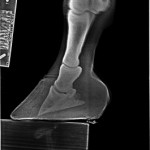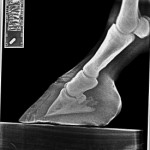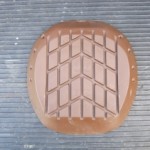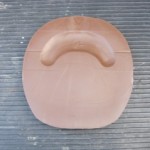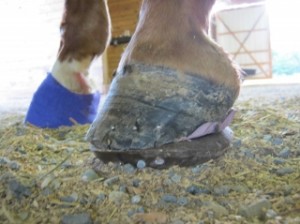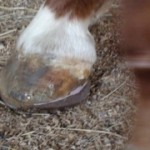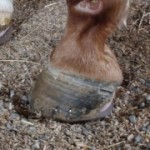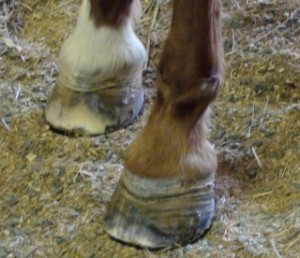 Leah Truelsen
Leah Truelsen
Owned by Melinda Truelsen
Laminitis
Leah Truelsen is a 17 year old Quarter Horse mare that suffered a severe laminitic event in early August 2011. (For more information about laminitis, see our educational articles.) Once she was stabilized, we worked with farrier Tim Hoover, to select and apply therapeutic shoes to Leah’s front feet. The goal was to provide support and take pressure off of the sensitive areas of the sole.
The tricky part about treating laminitic, or foundered horses, is that there are many therapeutic shoes available, and none of them work in every situation. I always try to explain to the horse owner that sometimes there is an element of trial and error in selecting shoes that will provide support to the horse’s foot without placing inappropriate pressure on the compromised part of the hoof. In more mild cases of laminitis, horses often don’t even need shoes, but if there is significant rotation of the coffin bone, therapeutic shoes are indicated.
We tried three different shoeing strategies with Leah, but she eventually became even more painful with all of them. We tried reverse shoes, where the shoes are applied backwards, then Myron McLane pads to supply more frog support. After that failed, we then tried regular shoes with a pour-in pad. After all of these attempts, Leah was still very painful and when her shoes and pour-in pads were removed, she had very soft painful sole over the tip of the coffin bone in both front feet, and I suspected that there were underlying seromas or abscesses.
- Right Front
- Left Front
Leah’s radiographs showed significant rotation of the right front coffin bone and very little sole depth in that hoof. The left front was also affected, but not as severely.
At this point we were at a crossroads with Leah. She was in a lot of pain, and her prognosis wasn’t too good. Melinda was very dedicated to Leah, and while she did not want her to suffer unduly, she did want to try every possible option to allow Leah the chance to recover from this devastating disease. I consulted with Dr. Dick Mansmann, of Equine Podiatry & Rehabilitation Mobile Practice in Chapel Hill. He agreed that Leah had a guarded prognosis, but recommended that we try Steward’s clogs.
The ground surface of clog is designed with enhanced breakover in all directions, but especially over the toe. The hoof surface of clog has a hollow for pressure relief on the apex of the coffin bone.
Leah: 10-19-2011
These pictures and video were taken 2 weeks after the 1st set of clogs were applied. She had already shown significant improvement in her level of comfort.
Leah: 12-08-2011
This picture and video were taken 6 weeks after the 2nd set of clogs were applied.
Leah: 01-16-2012
This video was taken about 5 weeks after the 3rd set of clogs were applied. Leah has continued to improve throughout the time that she has been wearing Stewards clogs on her front feet. She is able to be turned out during the day and has even trotted and cantered on her own in the pasture since the 4th set of clogs were applied.

